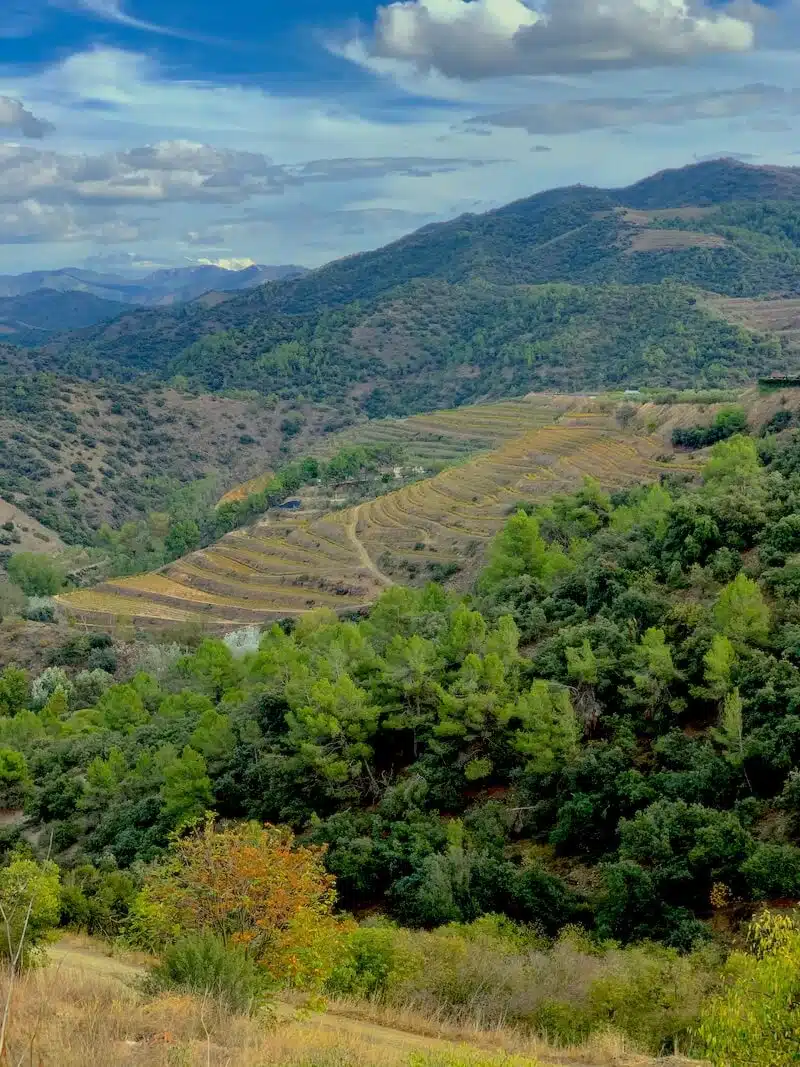The Spanish Wine Club
Spanish wine history



History: Spain’s Evolving Vitis Vinifera
The earliest evidence of winemaking in Spain has been traced back to the Phoenicians about 3,000 years ago. Winemaking then was characterized as a religious offering to the Gods and royalty. Spain, among the other “Old World” European countries have been working with the same origins of the Vitis Vinifera vine and evolved a variety of methods producing some of the best wine in the world today. There is a movement afoot to bring back and pay homage to ancient varietals, to maintain fruit forward styles, to honor the old style appellations while pushing boundaries for the future expression by winemakers.

Winemaking in Spain can be traced back at least 3,000 years thanks to the seafaring Phoenicans. Thereby winemaking is Spain has a lengthy history starting with religious significance. Over time Spain experienced much political strife. Surviving the Spanish inquisition, Spanish colonizations, the loss of such influence, the Spanish civil war, phylloxera (the bug that devastated the European wine industry) and Franco’s reign, Spain struggled internally socially and financially. On the positive side, France and Spain mutually helped each other survive the difficult times of phylloxera. Initially Spain sold their over-abundance of grapes to France’s decimated industry and when Spanish law disallowed theses exports, France brought their new technical expertise and French varietals to Spain. The death of Franco and the entry into the EU stabilized Spain’s economy and allowed for the development of Spain’s modern-day wine production enjoyed and celebrated all over the world today.
Spain has the most land dedicated to vineyards than any other country and is the third highest grape producer in the world. Thus presents a copious amount of wine for sale both internal and export sales. Even while working closely with the French winemakers, Spain struggled to market their terroir and unique varietals as successfully as the French did in Burgundy and Bordeaux, thus unable to attain the same type of worldwide reverence and price structure.
Internal wines sales provide low prices to the average Spaniard and reasonable prices for exports. The good and bad news is Spain is changing its strategy. Spain has taken conscious steps to upgrade their profile such as creating Spanish Pagos (estate produced wines) analogous to the Crus of France among other strategies to complement their 3,000-year-old history of winemaking.
Another strategy is that today winemakers seek a way to distinguish themselves among the plethora of competition. While Tempranillo is probably the most recognized of the Spanish grapes (and there are many others), Spanish winemaking is experiencing a resurgence in bringing back indigenous grape varietals thought long lost. Also, the use of the 3,000-year-old anfora (cement vessel) has been reintroduced in many wineries alongside the established stainless steel tanks and oak barrels. The strict traditional legal regulations awarded to the labels of joven, crianza, reserva and gran resevera in their prospective DO and DOCa’s are being enhanced, perhaps challenged by young winemakers forging their own path embracing more fruit forward, approachable wines. Breaking with tradition, some winemakers grasp the opportunity to innovate their own unique styles while still producing wine of traditional style. To the buyer, the styles and varietals are revealed on the label. Be sure to observe labels with an open mind as we experience Spain’s latest contributions.
Spanish Wine
For a variety of reasons, Spanish wine has not been viewed through the same lens as those from France or Italy and most don’t command the same steep pricing structure. The Spanish developed many indigenous grape varieties, some well-known, such as Tempranillo, but others barely known at all. A plethora of international varietals are also grown and vintified. The combination of the varietals makes Spanish wine interesting while presenting a great value.
Our passion is to bring these wonderful wines directly to your table. Much of our collection represents small family-owned wineries, wines that are very hard to find here in the states.
We plan to hold virtual and local tastings with the winemakers when they are available and eventually take clients to tour the vineyards with us.
More to follow…

Map of the regions of Spain, made by Chris
